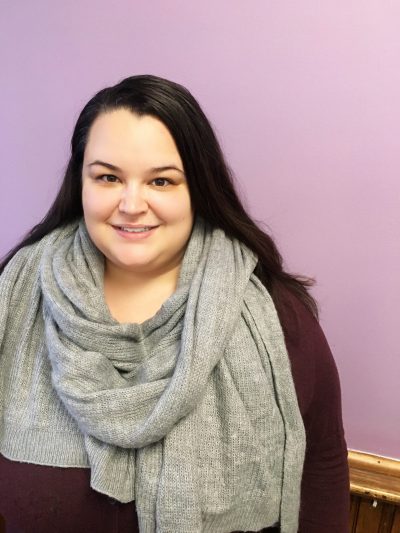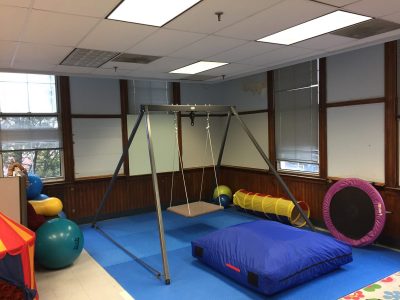A Work in Process: COMPASS’ Sensory Room
Tags: behaviors, emotions, occupational therapy, sensory, sensory room
 By Kelly Laurendi, Occupational Therapist
By Kelly Laurendi, Occupational Therapist
In September 2017, the COMPASS School saw an exciting new addition: a brand new Sensory Room. Occupational Therapist (OT), Kelly Laurendi, designed the Sensory Room to be a safe and sensory-supportive environment for students to explore and practice self-regulation strategies. Kelly specializes in social and emotional learning, sensory processing, task analysis, assistive technology, and activity and environmental modifications. Utilizing this specialized skill set and knowledge base, the OT promotes effective, evidence-based outcomes for students through individualized direct treatment per their Individualized Education Program (IEP), as well as through consultative services for whole classrooms.
Self-regulation is the ability to manage and control our energy levels, emotions, and behaviors. Students with histories of ADHD, learning disabilities, emotional impairments, anxiety, and trauma often demonstrate difficulty in self-regulation. Often these students are over responsive to sensory stimuli (such as noises, lights, smells) in their environment and require a break in a calming, safe space to help bring them back to a relaxed state. Alternatively, some students have very low energy and find it difficult to stay awake and the Sensory Room is a space for them to participate in activities to increase their energy levels.

Equipment and materials in the Sensory Room were carefully chosen for their abilities to engage the 7 sensory systems: touch, sight, hearing, smell, taste, proprioception (muscle sense), and vestibular (movement). There are many variables that mediate one’s sensory experience; those include intensity, frequency, duration, familiarity, receptivity, environment, mood, meaning, and sensory processing. The Sensory Room is effective by achieving focus, attention, and relaxation through managing appropriate stimulation in any of these categories. The room is home to an indoor swing, rocking chair, ball pit, oversized bean bags, and trampoline.
Students begin entering the school building at 8:05am, and the Sensory Room receives its first student by 8:15am. The room is busy filtering students in/out for the first hour of the school day. Seven students are scheduled for daily sensory room check-ins. These students have often had a difficult ride to school and need tools in the room to help them regulate in order to be ready for class. For some of these students, it’s because of neighborhood violence. For others, their brains are just wired differently from birth – the yelling, loud laughter, and rushing into the school building in the morning is unsettling for them.
 For the rest of the day, the Sensory Room is primarily used for direct occupational therapy and speech & language sessions. Clinicians might also bring up students for regularly scheduled clinical sessions as they find the sensory room setting to be the most beneficial for eliciting a therapeutic relationship. The room is also used for unscheduled check-ins from students who request to use the room. During these unscheduled check-ins, students often will use the swing, ball pit, or trampoline for up to 10 minutes to help them process or regulate to go back to class.
For the rest of the day, the Sensory Room is primarily used for direct occupational therapy and speech & language sessions. Clinicians might also bring up students for regularly scheduled clinical sessions as they find the sensory room setting to be the most beneficial for eliciting a therapeutic relationship. The room is also used for unscheduled check-ins from students who request to use the room. During these unscheduled check-ins, students often will use the swing, ball pit, or trampoline for up to 10 minutes to help them process or regulate to go back to class.
The 2018-2019 school year has brought new ideas and projects for the Sensory Room. One of the bigger projects includes the refinement and implementation of an iPad sign-in app to track room use and skills growth of students. Working with the Board Certified Behavior Analyst (BCBA) (see ABCs of ABA), the goal is to gather accurate data to determine the effectiveness of specific activities in the room on both academic achievement and behaviors. Other smaller projects include incorporating the use of aromatherapy and adding additional ambient lighting options. We’re looking forward to the continued success and growth of our new Sensory Room!